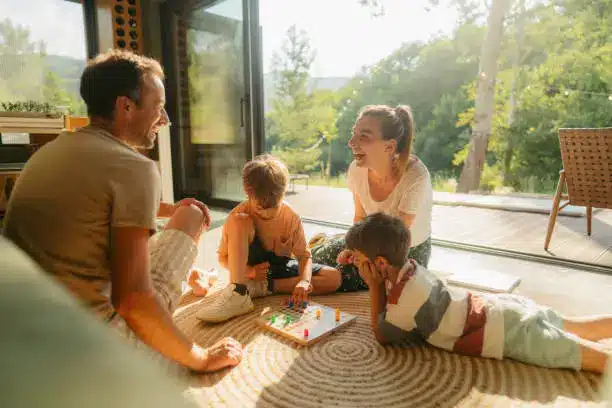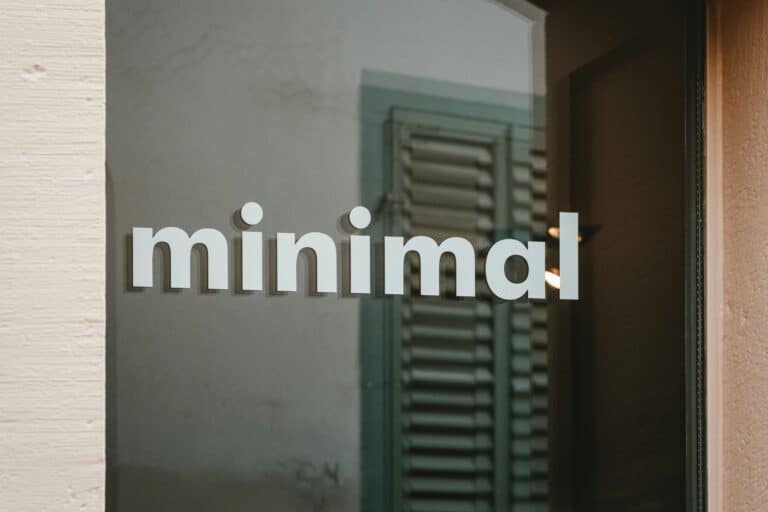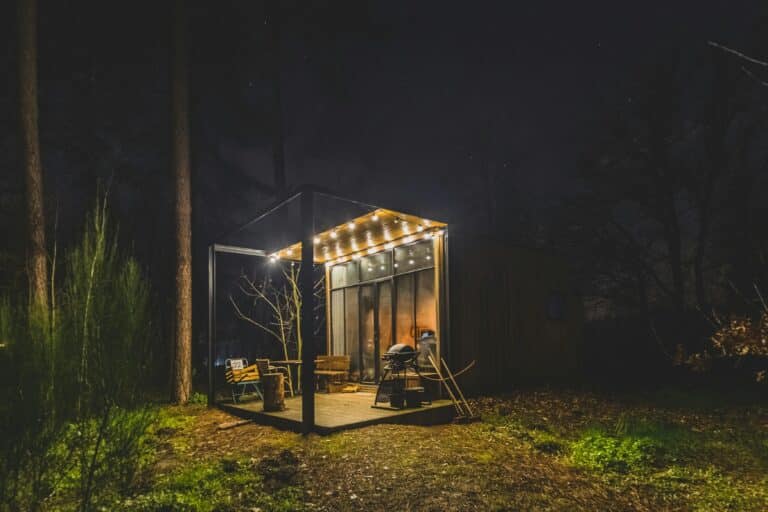The disposable culture that has taken over the world is not sustainable. We need a change, and it’s right there, within our grasp: Minimalist Eco-Chic, the art of embracing zero-waste living for a sustainable future. 🌎Our society has conditioned us to believe that more is better. But have you ever considered the power of less? Minimalism is not just a style or a trend, it’s a philosophy, a way of life. It teaches us to declutter, to focus on the essentials, and to stop drowning in a sea of unnecessary possessions. Minimalism is about quality, not quantity. And when combined with eco-friendly principles, it transforms into something even greater: Minimalist Eco-Chic, a zero-waste lifestyle that’s as stylish as it is sustainable. ♻️🍃

In this article, we will delve into the depths of this rising trend. We will explore the benefits of a minimalist, zero-waste lifestyle, and provide practical tips on how to adopt this sustainable practice in our everyday lives. The journey to zero waste is not an easy one, but it’s a rewarding path that leads to a cleaner, healthier planet and a more mindful, fulfilling life.
The Philosophy of Minimalist Eco-Chic
At the core of Minimalist Eco-Chic is the drive to reduce, reuse, and recycle. It’s about making conscious choices and being aware of the impact our actions have on the environment. 🌍 However, it’s not just about sustainability; it’s also about style. Minimalist Eco-Chic is about achieving that perfect balance between form and function, between style and sustainability. It’s about living a life that’s not only eco-friendly, but also chic, elegant, and sophisticated. 🌸💫
The Rise of Zero-Waste Living
Zero waste living has been gaining traction in recent years as more and more people become aware of the environmental impact of their consumption habits. From plastic-free grocery shopping to composting kitchen scraps, from swapping disposable cups for reusable ones to making DIY cleaning products, there are myriad ways to reduce waste and lead a more sustainable life. The goal of zero waste is not to produce zero waste – that’s nearly impossible in our current society – but to strive towards it, to minimize waste as much as possible, and to recycle and compost the rest. 🌿🌻
The Intersection of Minimalism and Sustainability
Minimalism and sustainability are two sides of the same coin. Both advocate for conscious consumption, for buying less and choosing well. When we embrace minimalism, we naturally reduce our ecological footprint by consuming less and wasting less. And when we adopt sustainable practices, we simplify our lives by focusing on what truly matters. Minimalist Eco-Chic is where these two concepts intersect, where style meets sustainability, where less truly becomes more. 🌐✨
Throughout this article, we will delve deeper into the concept of Minimalist Eco-Chic, exploring its benefits, challenges, and practical applications. We will share tips and tricks on how to reduce waste, declutter your life, and embrace a stylish, sustainable lifestyle. And we will provide real-life examples and success stories to inspire you on your journey towards zero waste living.
So, are you ready to embark on this exciting journey towards a cleaner, greener, more stylish future? Join us as we explore the world of Minimalist Eco-Chic, and learn how to embrace zero-waste living for a sustainable future. Let’s make a difference, one small step at a time. 💚🌱
🌱 Minimalist Eco-Chic: A Step Toward a Sustainable Lifestyle
While the world is gradually shifting toward a sustainable future, one trend that has gained significant popularity in recent years is Minimalist Eco-Chic. It’s a lifestyle that emphasizes reducing waste, reusing materials, and recycling resources to achieve sustainability, all while keeping aesthetics in mind. This trend perfectly captures the essence of ‘less is more’ and encourages a mindful and conscious approach to living. So, let’s delve deeper into the philosophy of this eco-friendly lifestyle trend and explore how you can embrace Zero-Waste Living for a Sustainable Future.
The concept of Minimalist Eco-Chic, at its core, integrates the principles of minimalism with eco-friendly practices. The aim is to minimize our carbon footprint by reducing consumption, and thereby waste. It also advocates the use of sustainable materials that are recyclable and reusable, reducing our reliance on non-biodegradable resources. From home decor to fashion, this trend promotes an aesthetically pleasing yet environmentally responsible lifestyle.
The beauty of Minimalist Eco-Chic lies in its simplicity and its potential to create a significant environmental impact. It’s not just about decluttering your life; it’s about decluttering the earth and giving it a chance to breathe. With every small step we take towards this lifestyle, we contribute to a larger goal – a sustainable and eco-friendly future.
🔄 Embracing the Zero-Waste Philosophy
The Zero-Waste philosophy is a crucial aspect of Minimalist Eco-Chic. It’s an approach that challenges us to rethink our consumption habits and make mindful decisions that reduce waste. From composting organic waste to opting for products with minimal packaging, the Zero-Waste philosophy encompasses various practices that can lead to a substantial reduction in waste generation.
Embracing the Zero-Waste philosophy might seem daunting at first, but it’s easier than you think. Start with small changes like carrying your own water bottle, using cloth bags for grocery shopping, or composting kitchen waste. Remember, the goal isn’t to achieve perfection, but progress. Every bit counts, and even the smallest changes can make a big difference.
For a visual guide on starting a Zero-Waste lifestyle, watch this informative video titled “Beginner’s Guide to Zero Waste Living (Ps, It Doesn’t Happen Overnight)” by Shelbizleee on YouTube. This video offers practical tips and advice on transitioning towards a Zero-Waste lifestyle.
🏡 Minimalist Eco-Chic: Redefining Home Decor
One of the areas where the Minimalist Eco-Chic trend has made a substantial impact is home decor. From furniture to accessories, this trend is all about choosing designs that are simple, functional, and made from sustainable materials. It’s about creating a living space that’s not only aesthetically pleasing but also environmentally friendly.
When decorating your home, consider opting for second-hand or recycled items. Reclaimed wood, for example, can be used to create beautiful and unique pieces of furniture. You could also consider making your own home decor items using upcycled materials. This not only reduces waste but also adds a personal touch to your home.
For more inspiration on minimalist eco-chic home decor, check out the video “Minimalist Home Tour | Simple & Sustainable Living” by Fairyland Cottage on YouTube. It offers a glimpse into a minimalist and sustainable home, providing valuable ideas on how to incorporate the Minimalist Eco-Chic aesthetic into your own living space.
👗 Minimalist Eco-Chic in Fashion
Another area where the Minimalist Eco-Chic trend is flourishing is in the world of fashion. It’s all about choosing quality over quantity, opting for timeless designs over fast fashion, and choosing sustainable materials over synthetic ones. This trend encourages us to invest in clothes that are durable, versatile, and made from environmentally friendly materials.
One way to embrace Minimalist Eco-Chic in fashion is to adopt a capsule wardrobe. A capsule wardrobe comprises a limited number of versatile pieces that can be mixed and matched to create numerous outfits. Not only does this reduce the need to constantly buy new clothes, but it also helps in reducing wardrobe clutter.
For a detailed guide on building a capsule wardrobe, watch “How To Build A Capsule Wardrobe” by Use Less on YouTube. This video provides a step-by-step guide on creating a minimalist, versatile, and sustainable wardrobe.
🌍 The Impact of Minimalist Eco-Chic on Our Environment
The impact of Minimalist Eco-Chic on our environment is far-reaching. It not only helps in reducing waste but also minimizes our carbon footprint. By opting for sustainable and recycled materials, we reduce our reliance on non-renewable resources. Moreover, by minimizing consumption, we can reduce the amount of waste that ends up in landfills and oceans, thereby protecting our planet.
Embracing the Minimalist Eco-Chic lifestyle is a commitment to our planet and future generations. It’s about making mindful choices that not only benefit us but also the environment. It’s about embracing a lifestyle that’s simple, aesthetically pleasing, and sustainable.
To gain a better understanding of the impact of our lifestyle choices on the environment, watch “The Story of Stuff” by The Story of Stuff Project on YouTube. This video provides an eye-opening look at our consumption patterns and their impact on the environment, and why it’s crucial for us to shift towards a more sustainable lifestyle.
🔍 Comparing Minimalist Eco-Chic with Other Sustainability Trends
Minimalist Eco-Chic, while a popular sustainability trend, is not the only one. There are several other trends like Green Living, Ethical Consumerism, and Circular Economy that also aim for a sustainable future. However, what sets Minimalist Eco-Chic apart is its emphasis on aesthetics and minimalism, along with sustainability.
| Sustainability Trend | Description | Key Features |
|---|---|---|
| Minimalist Eco-Chic | A lifestyle that integrates the principles of minimalism with eco-friendly practices, promoting an aesthetically pleasing yet environmentally responsible lifestyle. | Reduced consumption, use of sustainable materials, emphasis on aesthetics |
| Green Living | A lifestyle that emphasizes reducing, reusing, and recycling resources to protect the environment. | Eco-friendly products, recycling, renewable energy |
| Ethical Consumerism | Choosing to consume products that are ethically produced and have minimal impact on the environment and society. | Fair trade, ethical sourcing, organic products |
| Circular Economy | An economic system that aims to eliminate waste by continually using resources in a circular loop of production, usage, and recycling. | Resource efficiency, waste reduction, circular design |
In conclusion, while all these sustainability trends have their unique approaches, they share a common goal – to create a sustainable future. No matter which trend you choose to follow, remember, every small step counts. Let’s embrace a sustainable lifestyle and contribute to a better and greener future for all.
Conclusion
In wrapping up our exploration on the topic at hand, we’ve traversed through a range of key points, each presenting significant insights into our central theme. The journey was indeed technical, but we endeavored to make it as understandable as possible, drawing from the wealth of knowledge and experience garnered over years of engagement in IT and engineering domains. 👩💻👨💼
As we recapitulate, it’s crucial to remember that the objective was not merely to expose you to complex theories but also to break them down into digestible nuggets of information. After all, the world of Software Engineering isn’t as intimidating as it’s often perceived to be. We dived deep into the critical principles, methodologies, and frameworks, breaking down each element to its core essentials. 🧩
Our exploration began with the fundamental principles of software engineering, explaining how these principles form the backbone of creating robust, reliable, and efficient software. We highlighted the importance of understanding user requirements, design principles, coding standards, and testing methodologies in software development. 👨💻📝
Next, we traversed through the various software development methodologies, discussing in detail the advantages and drawbacks of each. We emphasized the Agile methodology, underlining its significance in today’s rapidly changing tech landscape. We also discussed other methodologies like the waterfall, spiral, and DevOps, pointing out how each one caters to different project requirements and team dynamics. 🔄⏭️
Subsequently, we navigated the maze of software engineering frameworks. Here, we touched upon frameworks like .NET, AngularJS, and ReactJS, elucidating how each framework has its unique set of features and how they assist developers in creating software more efficiently and effectively. 📚🛠️
In our quest for comprehension, we also emphasized the pivotal role of testing in software development, discussing various types of tests and their significance in ensuring the quality of the software. 🕵️♀️🔍
Finally, we discussed the future of software engineering, exploring trends like artificial intelligence, machine learning, and blockchain technology. We underlined how these technological advancements are shaping the future of software development and what they imply for software engineers. 🚀🌐
Remember, this was not just a technical excursion but a journey towards empowerment. The world of software engineering is vast and ever-evolving. Staying abreast with the latest trends, methodologies, and best practices is not just a requirement but a necessity for survival and growth. 🌱💪
So, do not let the journey end here. Continue exploring, learning, and applying your knowledge. Feel free to revisit this article whenever you need a refresher or even as a point of reference. And, of course, share this knowledge with others in your network. After all, learning is a two-way street, and the more we share, the more we learn.🔄🎓
If you found this article insightful, do not hesitate to leave a comment below. Your feedback is greatly appreciated. And if you want to stay updated with the latest trends and insights from the world of IT and engineering, make sure to subscribe to our newsletter.💌📫
In conclusion, it’s been a pleasure guiding you through this technical labyrinth. Remember, every giant leap in technology starts with a single line of code. Keep learning, keep coding, and let’s shape the future of technology together.👩💻🌐👨💼
[Sources:](#)
1. Agile Alliance
2. .NET
3. AngularJS
4. ReactJS
5. IBM
6. GeeksforGeeks



